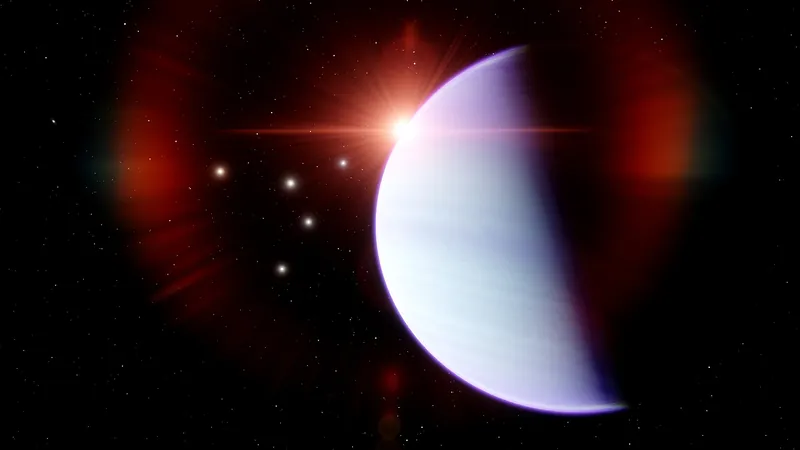
Astronomers Make Groundbreaking Discovery: Auroras Spotted on Neptune!
2025-03-29
Author: Siti
Introduction
For ages, Neptune, the farthest planet from the Sun in our solar system, has remained shrouded in mystery. With its icy, dynamic atmosphere and its distance making exploration challenging, Neptune has only been briefly visited by one spacecraft—Voyager 2—in 1989. Yet, in a stunning breakthrough, astronomers have finally detected auroras on this enigmatic planet, completely reshaping our understanding of its atmosphere.
What are Auroras?
Auroras, known for their spectacular light displays, occur when charged particles collide with a planet's magnetic field. We've admired these celestial spectacles on Earth, Jupiter, and Saturn, but they had eluded detection on Neptune—until now. Thanks to the advanced capabilities of the James Webb Space Telescope (JWST), scientists have unveiled the first clear signs of auroras on this ice giant, a revelation detailed in a significant study published in Nature Astronomy.
The Unique Characteristics of Neptune's Auroras
Interestingly, these auroras are not concentrated at Neptune’s poles as seen on Earth, but rather at mid-latitudes, an unusual phenomenon attributed to Neptune’s highly tilted magnetic field, which is nearly 50 degrees off its rotational axis. This perplexing orientation contributes to the challenges of studying Neptune, complicating our efforts to understand its atmospheric and magnetic behaviors better.
Why Has It Taken So Long to Detect These Auroras?
But why has it taken so long for researchers to identify these elusive auroras? The JWST exposed an unexpected twist: Neptune's upper atmosphere has undergone a startling temperature drop over the years, plummeting from approximately 900°F during the Voyager 2 flyby to around 200°F today. This dramatic cooling is believed to be the reason the auroras are incredibly faint—only about one percent of what scientists anticipated in terms of brightness.
Implications of the Discovery
This chilling revelation raises critical questions about Neptune's atmosphere and its changing nature. What factors could be contributing to this rapid cooling trend, and how might they affect the planet's weather patterns and potential atmospherics in the future?
Conclusion
The discovery of auroras on Neptune is more than just a scientific victory; it opens a new window into understanding the complex structures of Neptune’s magnetic field and the movement of charged particles within its atmosphere. As we unlock these secrets, we inch closer to demystifying one of the most unpredictable planets in our solar system.
Stay tuned for more astonishing findings as our exploration of Neptune and the rest of the cosmos continues! What else do you think lies beneath Neptune's icy veil?




 Brasil (PT)
Brasil (PT)
 Canada (EN)
Canada (EN)
 Chile (ES)
Chile (ES)
 Česko (CS)
Česko (CS)
 대한민국 (KO)
대한민국 (KO)
 España (ES)
España (ES)
 France (FR)
France (FR)
 Hong Kong (EN)
Hong Kong (EN)
 Italia (IT)
Italia (IT)
 日本 (JA)
日本 (JA)
 Magyarország (HU)
Magyarország (HU)
 Norge (NO)
Norge (NO)
 Polska (PL)
Polska (PL)
 Schweiz (DE)
Schweiz (DE)
 Singapore (EN)
Singapore (EN)
 Sverige (SV)
Sverige (SV)
 Suomi (FI)
Suomi (FI)
 Türkiye (TR)
Türkiye (TR)
 الإمارات العربية المتحدة (AR)
الإمارات العربية المتحدة (AR)